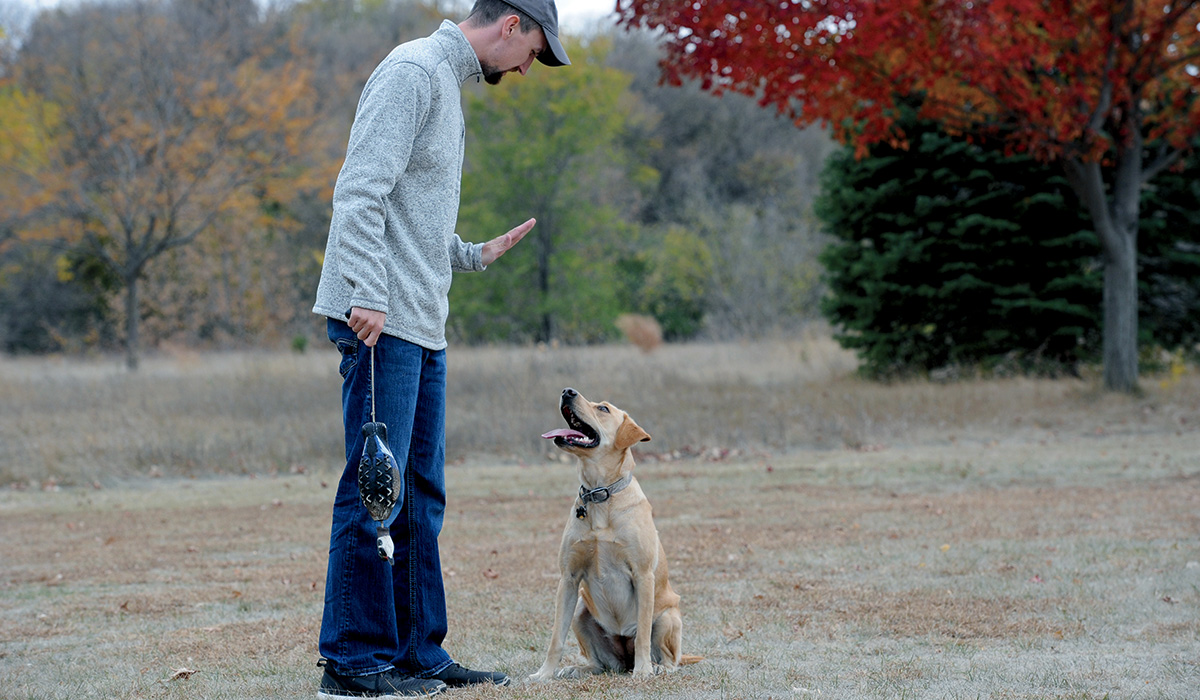Backyard Basics
How to maintain a solid retriever training regimen in small spaces
How to maintain a solid retriever training regimen in small spaces


You don’t need a lot of space to work on basic retrieving skills with your dog. In fact, a backyard is a good place for beginning trainers and young dogs to learn to work as a team.
A calm, obedient, and steady retriever elevates a day in the duck blind into something special, regardless of how many birds end up on the strap. The groundwork for producing this kind of hunting partner begins with the basics, and a backyard is a great place to start this important work with a young puppy or extend these skills with a more experienced retriever. Here are five basic skills that you can work on close to home.
Teaching a dog to come to you (recall) is one of the first skills a dog can learn, and the confined space of a fenced-in backyard provides an element of control over a puppy that is excited to explore the natural world. For dogs that are further along in their training, the backyard can be a great place to introduce new skills such as whistle commands or hand signals.
A steady dog is a safe dog and a worthy goal for every trainer. A steady dog waits to be sent on a retrieve until the shooting is over, the gun barrels are up, and the safeties are on. A morning in the blind can lead to sensory overload for a retriever. These experiences are jam-packed with sights, smells, sounds, and activities that can be distracting for the dog, causing it to sometimes leave its place, roam through the blind, and even break early for a retrieve.
Adding distractions to your training routine is a good step to take after a dog has learned the place or stay command, and you don’t need to travel to a training area to do this. With your dog on a place board or simply sitting in your yard, begin by walking away or walking around the board, doing jumping jacks, throwing tennis balls, or making any other kind of distraction that you can think of until your retriever is steady no matter what you do.
This skill can be introduced in a small area around the home or in the backyard. Begin by taking your dog to a spot where you will drop a dummy. Have the dog sit, then drop the dummy and walk the dog back a short distance (two to three yards to begin with). Have the dog sit again and then send him for the retrieve. In future training sessions, increase the distance until you have reached the limits of your space.
A straight length of fence in a backyard or park is an effective tool to help reinforce a skill that is highly useful in the field—having your retriever run or swim in a straight line when making a retrieve. Making even simple, short retrieves along the fence will help build a habit of taking the straightest line possible, out and back.
Retriever accessories like dog stands and blinds are great tools to use in the field, and incorporating them into training sessions around the house is a perfect way to introduce them to your dog. Having them on hand at home makes it easier to build the number of repetitions a dog has with the new tool, and successful repetition builds confidence for your retriever, especially when working on the basics. A retriever that is confident in what is expected is a welcome addition to any duck blind.
Ducks Unlimited uses cookies to enhance your browsing experience, optimize site functionality, analyze traffic, and deliver personalized advertising through third parties. By continuing to use this site, you agree to our use of cookies. View Privacy Policy